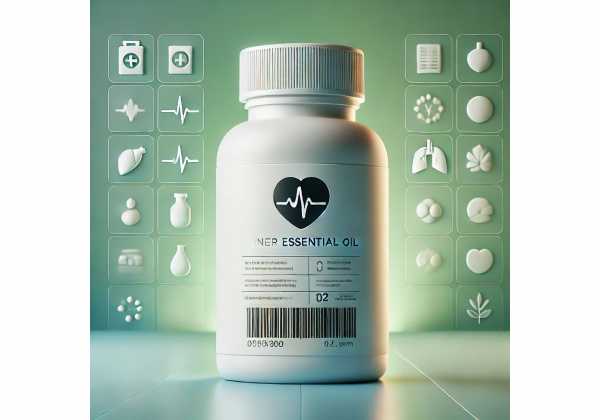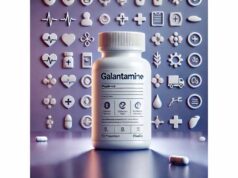
Ginger essential oil is the concentrated aromatic fraction distilled from the rhizome of Zingiber officinale. Unlike dried ginger powder or standardized ginger extracts, this oil is rich in volatile sesquiterpenes (like zingiberene) and monoterpenes that deliver a warming scent and topical sensation. People most often use it for inhalation during bouts of nausea, as a massage add-in for sore muscles and stiffness, or in blends designed to create a comforting, spicy atmosphere. Clinical trials suggest that inhaled ginger aroma can ease postoperative nausea for some adults, and preclinical research shows anti-inflammatory activity relevant to skin and musculoskeletal comfort. At the same time, essential oils are potent concentrates: improper use—especially undiluted skin application—can irritate or sensitize the skin. This guide explains how ginger essential oil works, where the evidence is strongest, how to use it step-by-step, what dose ranges are reasonable, and who should skip it.
Quick Facts
- Inhalation during postoperative recovery has reduced nausea severity in several trials.
- Essential oils are concentrated and may irritate skin if used undiluted; always dilute for topical use.
- Practical ranges: diffusion 2–4 drops per 200–300 mL water for 15–30 minutes; topical 0.5–3% dilution in a carrier oil.
- Avoid if pregnant (especially first trimester), breastfeeding, under 6 years old, or if you have a history of fragrance sensitivity.
Table of Contents
- What is ginger essential oil and how it works
- What benefits are supported in humans
- How to use ginger essential oil correctly
- How much ginger essential oil per day
- Safety, side effects, and who should avoid it
- Research at a glance: what we know and what we do not
What is ginger essential oil and how it works
Ginger essential oil (GEO) is obtained by steam distillation of the ginger rhizome. Steam distillation pulls out only the most volatile, aromatic compounds; it does not capture ginger’s pungent, non-volatile constituents like gingerols and shogaols that dominate capsules and teas. That difference explains why ginger essential oil behaves differently from culinary or supplemental ginger: it smells like ginger, it warms on contact with skin, but it is not interchangeable with powdered ginger.
The composition varies with cultivar, harvest timing, and distillation method, yet a familiar profile runs through most high-quality oils. GEO is typically dominated by sesquiterpenes—especially α-zingiberene—alongside β-bisabolene, ar-curcumene, and β-sesquiphellandrene, with smaller amounts of monoterpenes such as camphene, 1,8-cineole, and citral isomers depending on the source. These molecules are lipophilic and volatile, which is why you can perceive effects with inhalation and why topical application requires dilution in a carrier oil.
What does GEO actually do? In preclinical models, GEO and its major terpenes demonstrate anti-inflammatory activity (down-modulating mediators like COX-2, IL-6, and NF-κB), antioxidant effects, and modest antimicrobial activity against common skin and environmental bacteria. Those actions are most relevant to topical comfort—think local warmth and easing of stiffness—and to the sensory “comfort” response you get during aromatherapy.
For nausea, the primary action with essential oils is olfactory and neurocognitive, not gastric. Inhaled aromas can influence limbic circuits and autonomic tone in ways that shift nausea perception. Trials that found benefit typically used brief, repeated inhalation from a gauze pad or inhaler near the nose during early postoperative recovery. This is not the same as swallowing ginger extract for motion sickness or pregnancy nausea. If you are choosing among ginger formats, match form to goal: swallow capsules for gastrointestinal effects when appropriate; consider GEO for short, targeted aroma sessions—especially in the postoperative setting under clinical guidance.
Quality matters. A trustworthy ginger essential oil lists the botanical name (Zingiber officinale), the plant part (rhizome or root), and the extraction method (steam distilled). More advanced labels add a GC–MS profile or at least typical constituents with ranges. Because GEO oxidizes over time and oxidized oils are more irritating, buy small volumes, store tightly capped away from light and heat, and aim to finish a bottle within 12–24 months of opening.
Finally, remember the potency. A single milliliter can contain dozens of drops and hundreds of milligrams of terpenes. Respect for that concentration—especially on skin and around small children—goes a long way toward safe, satisfying use.
What benefits are supported in humans
The most consistent human signal for ginger essential oil is reduction in postoperative nausea. In multiple randomized studies, adults recovering from surgery inhaled ginger aroma (either alone or as part of a mint-lavender blend) and reported lower nausea intensity over the next minutes to hours compared with placebo controls. Designs vary—from three deep inhalations from a gauze pad saturated with essential oil to gauze affixed to the collar and refreshed every 30 minutes—but the core finding repeats: for some patients, quick, low-risk aroma sessions ease discomfort and may reduce antiemetic requests. These studies focused on adults in monitored settings; they do not prove benefit for every cause of nausea, nor do they substitute for medical management when nausea follows anesthesia, opioids, or specific surgeries.
Outside postoperative care, evidence is patchier. Trials in chemotherapy patients have tested various inhaled aromatherapy protocols; results range from modest symptom improvements to no clear effect, often confounded by concurrent antiemetics and differing essential-oil blends. For pregnancy nausea, the strongest clinical evidence involves oral ginger powder or standardized extracts—not essential oil. If you are pregnant, do not assume that an oil diffuser replicates the data on capsules; in early pregnancy particularly, err on the side of avoiding essential oils unless your prenatal clinician recommends a specific protocol.
Topically, ginger essential oil is widely used in massage blends for perceived warmth and comfort in stiff muscles and osteoarthritic joints. Preclinical work supports anti-inflammatory potential, and some topical ginger preparations (not always essential oil) show benefit in small human studies. However, high-quality randomized trials testing GEO in standardized dilutions for musculoskeletal pain are still scarce. That means any topical comfort you feel is partly pharmacologic and partly sensory—perfectly valid if it helps you relax and move, but not a reason to stop evidence-based care for arthritis, tendinopathy, or injury.
As for antimicrobial, skin, or respiratory benefits, laboratory results do not automatically translate to real-world outcomes. GEO can inhibit selected bacteria in vitro at concentrations higher than you would typically apply to human skin. Diffusing GEO into room air for “disinfection” is appealing but not evidence-based; prioritize ventilation, hand hygiene, and surface cleaning instead.
Where does this leave a practical user? If you are an adult exploring non-drug help for mild postoperative nausea (under clinical oversight), a travel-friendly personal inhaler or gauze method with ginger essential oil is reasonable. If you want a warming massage blend for short-term comfort, GEO in a well-diluted carrier can be a pleasant adjunct. For chronic conditions or infection control, GEO should complement—not replace—standard treatments. Keep expectations modest, track your own response, and re-evaluate if benefits are not clear after a few trials.
How to use ginger essential oil correctly
Start with a clear goal and a simple method. Essential oils are potent, so the safest, most controlled techniques are brief inhalation and low-strength topical application. Introduce only one new oil at a time so you can attribute effects and spot adverse reactions quickly.
For nausea (adult, postoperative or situational):
- Wash your hands and sit upright.
- Place 1–2 drops of ginger essential oil on a cotton pad or tissue.
- Hold it 2–3 cm below your nose and take three slow, deep breaths; rest for a minute; repeat up to three cycles.
- If you are in a clinical setting, follow your care team’s protocol; many use gauze taped to a gown collar, replenished with one or two drops every 30–60 minutes for the first couple of hours.
- If symptoms persist or worsen, stop aroma sessions and ask for medical care. Do not delay antiemetics when indicated.
For a warming body massage blend (adult):
- Choose a neutral carrier oil (fractionated coconut, jojoba, sweet almond).
- Aim for 1–3% dilution for general body use: that is 10–30 drops GEO per 50 mL carrier (about 2–6 drops per 10 mL). For short, localized use on larger muscles, experienced users sometimes try up to 4–5% if skin is not sensitive; avoid the face and mucous membranes at any strength.
- Mix only what you will use in a few weeks; label the bottle with the date.
- Patch test: apply a pea-sized amount to the inner forearm; check after 24 hours for redness or itching before broader use.
For diffusion (adult household):
- Add 2–4 drops to a water-based diffuser with 200–300 mL of water.
- Run for 15–30 minutes in a well-ventilated room; repeat up to three times daily.
- Keep diffusers away from children, pets, and bird habitats; ventilate after use.
For compresses and baths:
- Warm compress: add 3–5 drops GEO to 250 mL of warm water along with a teaspoon of dispersant (unscented liquid soap) or mix those drops into a tablespoon of carrier oil; soak a cloth, wring, and apply to large muscles for 10–15 minutes.
- Baths: do not drip essential oil directly into bathwater. First stir 5–10 drops into a tablespoon of carrier oil or an approved bath dispersant; add to a full tub and swirl.
What not to do:
- Do not apply undiluted essential oil (“neat”) to skin.
- Do not ingest ginger essential oil unless you are working with a qualified clinician experienced in oral essential-oil prescribing and safety monitoring. Ingestion and encapsulation are not the same as culinary ginger or standardized extracts.
- Do not use GEO around infants or young children; even low concentrations can be overwhelming, and small airways are sensitive.
- Do not diffuse continuously for hours; prolonged exposure increases the chance of headache or sensitization without improving outcomes.
Choosing and storing a bottle:
- Look for the Latin name (Zingiber officinale), plant part (root/rhizome), and “steam distilled” on the label.
- Prefer suppliers who provide batch testing (GC–MS) or typical constituent ranges.
- Store tightly capped, away from heat and sunlight; expect a shelf life of 2–3 years unopened and 12–24 months after opening. If the scent changes sharply or the oil feels sticky, it may be oxidized—retire it.
With these steps, you can run a safe, low-risk experiment: inhale for brief intervals when you need it and, if desired, use a modest topical dilution for temporary muscular comfort.
How much ginger essential oil per day
There is no universal “daily dose” for essential oils. Instead, think in terms of method-specific exposure and the lowest amount that achieves your goal. For ginger essential oil, practical adult ranges are:
Inhalation (adult):
- On tissue or gauze: 1–2 drops held below the nose for three slow breaths; repeat up to three cycles at an episode’s onset. In monitored settings, gauze affixed to a collar is sometimes refreshed with 1–2 drops every 30–60 minutes during the early postoperative window.
- Personal inhaler: 10–15 drops loaded into a cotton-wick inhaler (single-user device), then 2–3 deep breaths as needed up to several times per day. Replace the wick every few weeks.
- Diffuser: 2–4 drops per 200–300 mL water for 15–30 minutes, up to three sessions daily. More drops or longer runtime does not mean more benefit; if the aroma lingers after a half hour, give your nose a break.
Topical (adult):
- General body applications: 1–3% dilution (10–30 drops per 50 mL carrier), 1–2 times daily as needed for up to two weeks. If helpful and well tolerated, you can cycle use (for example, 5 days on, 2 days off) to lower sensitization risk.
- Localized, short-term spot use (experienced users only): up to 4–5% on large muscles for a few days, never on the face or sensitive skin, and only after a patch test.
Sensitive contexts and populations:
- Face, neck, or areas with delicate skin: stay at 0.5–1% dilution.
- Older adults or those with fragile skin: 0.5–1% to start.
- Pregnancy and breastfeeding: avoid essential oils unless a clinician experienced in perinatal aromatherapy advises a specific protocol. Even then, use very low concentrations and brief exposures.
- Children: do not use GEO under age 6. For ages 6–12, many practitioners avoid GEO altogether or limit to occasional diffusion at extremely low levels; always prioritize ventilation and consider non-aromatic strategies first.
How long to try it:
- For postoperative nausea, aroma effects—if they occur—are apparent within minutes. If nothing changes after a few inhalation cycles, move on to other measures.
- For topical comfort, give a diluted blend 3–7 days; if you do not notice any difference, discontinue rather than increasing concentration.
Unit conversions and practical tips:
- “% dilution” equals milliliters (or grams) of essential oil per 100 mL (or 100 g) of carrier. As a rough guide, 1% ≈ 10 drops per 50 mL; 2% ≈ 20 drops per 50 mL. Drop counts vary with droppers and viscosity—consistency matters more than perfection.
- Measure with a disposable pipette when possible; record recipes so you can remake what works.
What about oral use?
- Ginger essential oil is not the same as ginger tea, powder, or standardized extract. Oral essential-oil dosing belongs in the hands of trained clinicians because of potency, interactions, and aspiration risk. For self-care, stick to inhalation and topical methods.
By anchoring use to method-specific ranges and brief, goal-driven sessions, you reduce risk while giving GEO a fair test.
Safety, side effects, and who should avoid it
Common reactions and how to minimize them. Essential oils can irritate or sensitize the skin, especially when oxidized or applied undiluted. With ginger essential oil, the most common immediate reaction is a transient warming or mild redness at typical body-use dilutions; stinging, persistent redness, or itch indicates that the blend is too strong or that your skin does not tolerate it. Always dilute GEO in a carrier oil, start at 1%, and patch test before broader application. Take breaks in use, and retire old, oxidized oils.
Eyes, mucosa, and airways. Keep GEO away from eyes and mucous membranes. Do not apply to broken skin. When you diffuse or inhale, use brief sessions in well-ventilated spaces. People with asthma, chronic cough, or fragrance sensitivity can react to any strong aroma; if you experience throat tickle, cough, or chest tightness, stop immediately and ventilate.
Photosensitivity and stains. Ginger essential oil is not considered phototoxic, unlike cold-pressed citrus oils. It can, however, stain light fabrics—test blends before use on clothing, linens, or masks.
Pregnancy, breastfeeding, and children. In early pregnancy, avoid essential oils altogether unless your prenatal clinician suggests a specific plan. Later in pregnancy and during breastfeeding, many professionals still recommend avoiding GEO because safety data for concentrated inhalation and topical use are limited. Do not use GEO with infants or toddlers; for older kids, favor non-aromatic approaches (cool air, fluids, rest) and seek pediatric guidance before considering any essential oil.
Medical conditions and medicines. If you have a history of contact dermatitis or fragrance allergy, ginger essential oil is likely to aggravate symptoms. People on complex medication regimens (especially those involving sedatives, anticoagulants, or chemotherapy) should run aromatherapy plans past their clinicians; while inhalation at low levels is unlikely to create serious drug interactions, your team may prefer you avoid nonessential aromas around specific treatments or devices. If you are recovering from surgery, follow hospital policies—some centers encourage aromatherapy as a comfort measure, others limit it to nurses trained in its use.
Product quality and adulteration. Buy from suppliers who disclose the botanical name (Zingiber officinale), plant part (rhizome/root), and extraction method (steam distillation). Reputable vendors provide safety and composition information and avoid stretching claims. Adulteration with cheaper terpenes can change scent and skin response. If an oil smells sharply different from batch to batch or from what you expect (e.g., harsh turpentine notes), do not use it on skin.
Overexposure warning signs. Headache, lightheadedness, nausea, or a sense of being “overwhelmed” by scent tells you to stop and ventilate. On skin, look for delayed itch or rash (allergic contact dermatitis) that persists for days; if this occurs, stop all fragranced products in the area and consult a clinician.
Emergency guidance. If essential oil gets into the eye, flush with plenty of room-temperature water for several minutes and seek medical care if irritation persists. If swallowed unintentionally, do not induce vomiting; call your local poison control center for instructions and bring the product label with you.
Essential oil safety is mostly about dose, duration, and context. Use small amounts for short periods, keep it away from vulnerable groups, and do not let a pleasant scent substitute for needed medical treatment.
Research at a glance: what we know and what we do not
Where human evidence is strongest. In adult postoperative settings, brief inhalation of ginger essential oil—either alone or within a blend—has reduced the severity of nausea for a subset of patients compared with placebo. Benefits typically appear within minutes of exposure and may reduce requests for rescue antiemetics. Protocols vary, but most involve one to two drops on a gauze pad or a prepared inhaler and short, repeated sessions. These trials took place in monitored environments with clinicians available and standard antiemetic pathways in place.
Signals that are promising but preliminary. Studies of inhaled aromatherapy in other nausea contexts (for example, chemotherapy) report mixed results; methodology and blends differ widely. For musculoskeletal comfort, GEO’s documented anti-inflammatory actions in preclinical models make it a plausible topical adjunct, and traditional use is strong, but rigorous randomized trials using standardized topical dilutions are still limited.
What the lab says. Chemical profiling confirms that GEO contains abundant sesquiterpenes and monoterpenes; across animal and in vitro models, GEO has demonstrated anti-inflammatory, antioxidant, and modest antimicrobial activity—reductions in COX-2, IL-6, and NF-κB signaling are recurrent themes. These findings help explain users’ reports of warming comfort and may inform future dermatologic or musculoskeletal research. They do not, on their own, justify therapeutic claims for chronic disease.
Safety and standards. Cosmetic safety evaluations conclude that ginger-derived ingredients—when formulated to be non-sensitizing and used within typical concentrations for leave-on and rinse-off products—are acceptable in cosmetics. These assessments emphasize formulating practices that minimize sensitization and note that data for certain derivatives remain limited. For consumer use, the practical translation is conservative dilution, attention to skin response, and avoiding prolonged or continuous exposure.
Gaps to fill.
- Targeted RCTs: Standardized inhalation protocols for defined nausea scenarios outside surgery (e.g., motion sickness) and well-designed topical trials for osteoarthritis or delayed-onset muscle soreness.
- Dose–response: Optimal drop counts, inhalation timing, and session frequency tied to outcomes, not just user preference.
- Dermal safety over time: Real-world sensitization rates with everyday body-use dilutions and the role of oil oxidation.
- Subpopulation data: Safety and efficacy in older adults, those with respiratory sensitivity, and peri-pregnancy windows.
Bottom line. Ginger essential oil is best viewed as a focused tool: a short-burst inhalation option for some kinds of nausea and a well-diluted, warming adjunct for short-term comfort. It is not a cure-all and should not replace proven therapies. If you use it thoughtfully—clear goal, minimal dose, tight safety rules—you will get the most from what the current evidence actually supports.
References
- Effect of aromatherapy with peppermint, ginger, and lavender on postoperative nausea severity after oral surgery under general anaesthesia: A single-blind randomized controlled trial 2025 (RCT)
- Effectiveness of Ginger Essential Oil on Postoperative Nausea and Vomiting in Abdominal Surgery Patients 2017 (RCT)
- Ginger Essence Effect on Nausea and Vomiting After Open and Laparoscopic Nephrectomies 2015 (RCT)
- Safety Assessment of Zingiber officinale (Ginger) – Derived Ingredients as Used in Cosmetics 2022 (Safety Assessment)
- Essential oils of Zingiber officinale: Chemical composition, in vivo alleviation effects on TPA induced ear swelling in mice and in vitro bioactivities 2022 (Preclinical)
Disclaimer
This guide is educational and is not a substitute for personalized medical advice, diagnosis, or treatment. Essential oils are concentrated substances. Do not ingest ginger essential oil without guidance from a qualified clinician. Avoid use in pregnancy, while breastfeeding, and in children under 6 years old. If you have asthma, fragrance allergy, sensitive skin, or complex medical conditions, consult your healthcare professional before use. Stop immediately and seek care for eye exposure, persistent skin irritation, breathing difficulty, or worsening nausea.
If this article helped you, please share it on Facebook, X (formerly Twitter), or your favorite platform, and consider following us for future updates. Your support helps us continue to create carefully researched, people-first health content.










